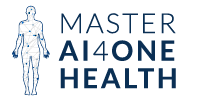Alcoholic Ketoacidosis: Signs, Symptoms, and Treatment The Recovery Village Cherry Hill at Cooper
Alcoholic Ketoacidosis: Signs, Symptoms, and Treatment The Recovery Village Cherry Hill at Cooper
All alcoholic patients presenting with acute illness should be https://ecosoberhouse.com/article/how-art-therapy-can-help-in-addiction-recovery/ offered contact with addiction services prior to or following discharge wherever possible. Wrenn et al found altered mental status in 15% of patients, attributable in all but one case to hypoglycaemia, severe alcohol intoxication, or infection. Fever was seen in only two patients, both with other likely underlying causes. Correct diagnosis is essential for effective treatment of AKA, and these laboratory tests provide the necessary data to confirm the presence of the condition. The clinical assessment for Alcoholic Ketoacidosis (AKA) involves a comprehensive evaluation of patient history, physical examination, and laboratory findings.
- Despite the frequency of abdominal symptoms, objective findings other than tenderness were infrequent.
- Alcoholic ketoacidosis (AKA) is a common reason for investigation and admission of alcohol dependent patients in UK emergency departments.
- However, if an AKA patient is lethargic or comatose, an alternative cause should be sought.
- Arrange follow-up to evaluate patients after the resolution of symptoms, in order to detect other complications of chronic alcohol abuse.
Alcoholic Ketoacidosis
7 Under conditions of starvation, the liver increases the production of ketones from fatty Sober living house acids to supply the brain, kidney, and other peripheral tissues with a metabolic fuel that can replace glucose. Increased ketogenesis secondary to the utilization of hepatic glycogen stores, with subsequently increased lipolysis and a decreased insulin-to-glucagon ratio, causes starvation ketosis. Examination should reveal a clear level of consciousness, generalised abdominal tenderness (without peritoneal signs), and tachypnoea.
Insulin Therapy
To grasp the implications of alcoholic ketoacidosis fully, one must delve into alcoholic ketoacidosis its biochemical underpinnings. Ethanol metabolism primarily occurs in the liver, where it gets converted into acetaldehyde and subsequently into acetic acid. This process generates an excess of NADH (nicotinamide adenine dinucleotide), which shifts the balance of metabolic pathways.
How is alcoholic ketoacidosis treated?
As ethanol is metabolized, it generates an excess of NADH, reducing gluconeogenesis and causing hypoglycemia. This triggers the body to convert fatty acids into ketones, resulting in elevated ketone levels and acidosis. AKA can be an unrecognized cause of patients presenting with a severe metabolic acidosis, including the presence of ketones. It should be suspected in any patient who has a history of chronic alcohol dependency, malnutrition or recent episode of binge drinking 1. In the emergency department (ED), where AKA is frequently managed, patients often present with a history of alcohol use, whether acute or chronic, accompanied by symptoms such as nausea, vomiting, and abdominal pain.
Alcoholic Ketoacidosis Treatment and Diagnosis
Alcoholic ketoacidosis is attributed to the combined effects of alcohol and starvation on glucose metabolism. People with this condition are usually admitted to the hospital, often to the intensive care unit (ICU). Treatment may involve fluids (salt and sugar solution) given through a vein. You may get vitamin supplements to treat malnutrition caused by excessive alcohol use.
Take Our Alcohol Abuse Self-Assessment
If the diagnosis of alcohol withdrawal syndrome is established, consider the judicious use of benzodiazepines, which should be titrated to clinical response. Upon discharge from the hospital, your doctor may recommend connecting you with resources and support to aid in your recovery from alcohol use disorder. This could include referrals to counseling, therapy, or rehabilitation programs, providing you with a structured path toward sustained sobriety.
- If you are diagnosed with alcoholic ketoacidosis, you’ll typically require hospitalization for close monitoring and specialized care.
- In 1940, Dillon and colleagues first described alcoholic ketoacidosis (AKA) as a distinct syndrome.






